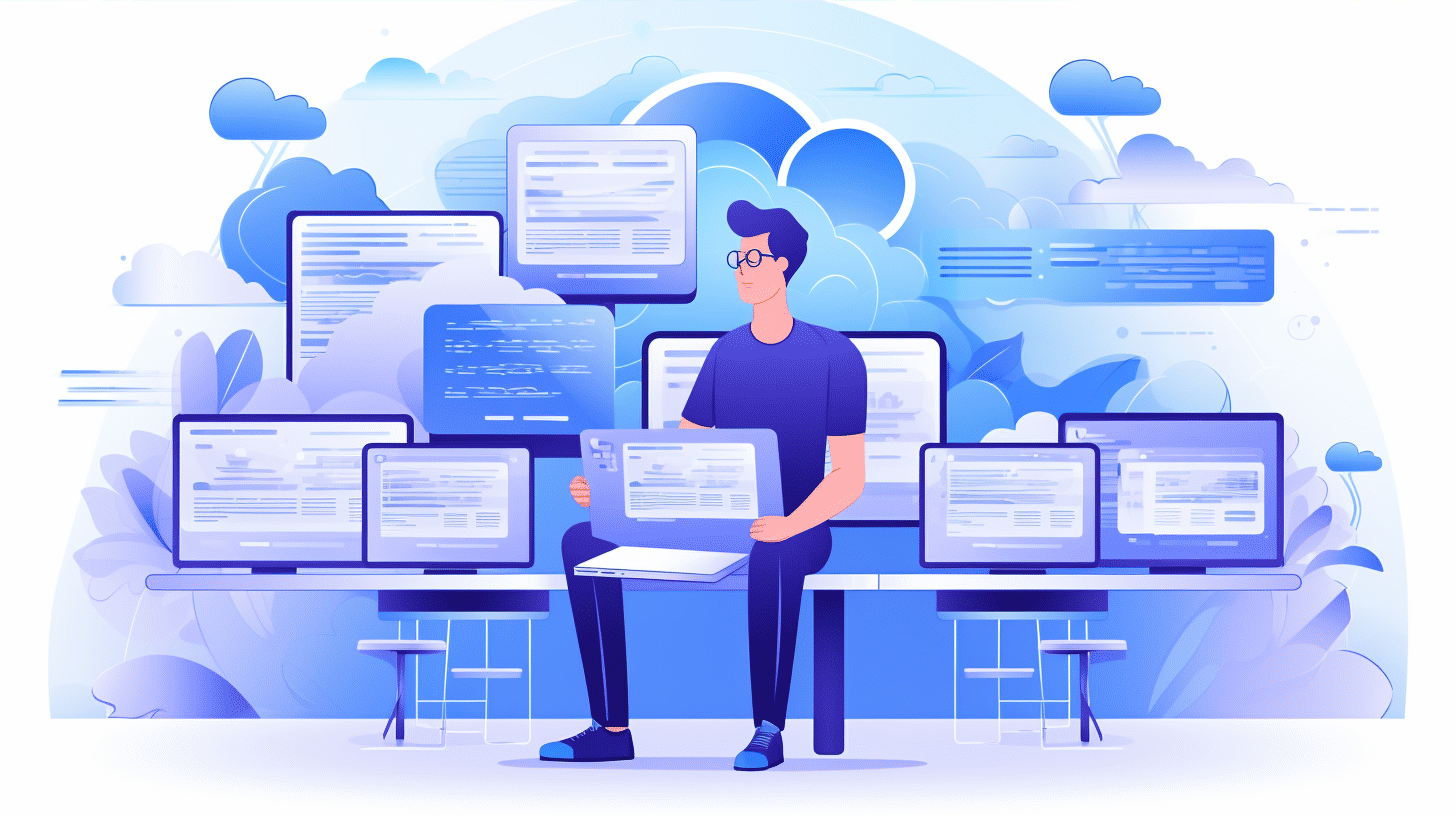在當今快節奏的數位世界中,網站載入速度對於決定線上業務的成功起著至關重要的作用。 🚀 加載緩慢的網站可能會讓訪客感到沮喪,導致他們離開並在其他地方尋找資訊或產品。這不僅會導致糟糕的用戶體驗,還會對您網站的搜尋引擎排名產生負面影響。因此,如果您是 WordPress 網站所有者並希望增強網站的效能,那麼您來對地方了!
在本文中,我們將探討一些簡單但有效的策略來提高 WordPress 網站的載入速度。從了解網站速度的重要性到識別載入時間緩慢的常見原因,我們將涵蓋所有必要的方面。此外,我們還將為您提供可行的提示和工具,以優化您的網站並提高其整體效能。那麼,讓我們開始吧,讓您的 WordPress 網站變得快如閃電! ⚡️
了解網站速度的重要性
在當今快節奏的數位世界中,網站速度對於確保良好的用戶體驗和維持較高的搜尋引擎排名起著至關重要的作用。無論您是企業主、部落客還是網站開發人員,了解網站速度的重要性以及它如何影響您的線上成功都至關重要。
對使用者體驗的影響
想像一下,點擊一個連結或輸入一個網站地址,然後等待頁面加載,感覺就像等了很久一樣。真令人沮喪,不是嗎?嗯,您的網站訪客也同樣感到沮喪。這就是為什麼網站速度對使用者體驗如此重要:
- 降低跳出率: 研究表明,網站速度慢可能導致高退出率。如果您的網站載入時間過長,訪客可能會放棄它並尋找其他網站。網站加載即使延遲幾秒鐘也會阻止潛在訪客進一步探索您的網站,從而導致更高的跳出率。
- 提高參與度: 現在人們的注意力集中時間很短。他們希望網站能夠快速加載並及時提供他們需要的資訊或服務。透過更快載入的網頁,您可以讓訪客更快地存取您的內容並與您的網站更無縫地互動,從而增強用戶參與度。
- 提高轉換率: 載入緩慢的網站不僅會阻礙訪客,還會降低他們轉換為客戶或潛在客戶的可能性。研究表明,網站速度越快,轉換率就越高。透過提高網站速度,您可以為訪客創建更有利的環境來採取所需的操作,無論是進行購買、填寫表格或訂閱您的電子報。
對 SEO 排名的影響
除了影響使用者體驗之外,網站速度還會影響您的搜尋引擎優化(SEO)排名。谷歌等搜尋引擎將網站速度視為排名因素之一。以下是它如何影響你的 SEO:
- 更好的可爬行性: 搜尋引擎機器人需要有效地抓取和索引您的網站頁面。如果您的網站載入時間過長,可能會對可爬行性和索引過程產生負面影響。因此,您的網頁可能無法在搜尋引擎結果中被完全發現和排名。
- 改進的用戶訊號: 搜尋引擎會考慮各種使用者訊號來決定網站的品質和相關性。網站速度就是這些訊號之一。如果您的網站速度很慢,訪客很可能會離開,從而向搜尋引擎發送負面訊號。另一方面,速度更快的網站往往具有更好的用戶參與度和更低的跳出率,這可以對您的搜尋引擎排名產生積極影響。
- 行動友善性: 隨著越來越多地使用行動裝置瀏覽互聯網,行動友善已成為 SEO 的關鍵因素。在行動裝置上載入速度快的網站更有可能在行動搜尋結果中排名更高。優化您的網站速度可以幫助您在行動優先時代保持競爭力。
總之,網站速度不僅僅是一個技術面,而且是一個影響用戶體驗和 SEO 排名的關鍵因素。透過優先考慮網站速度優化,您可以提高用戶參與度、降低跳出率、提高轉換率,並最終為您的網站帶來更多流量。所以,不要低估快速加載網站的力量! 🚀
加載速度慢的常見原因
緩慢的載入時間可能會讓網站訪客感到沮喪,甚至會導致用戶參與度和轉換率下降。有多種因素會導致載入時間變慢,必須識別並解決這些因素以確保流暢的使用者體驗。在本節中,我們將探討載入時間緩慢的一些常見原因並提供解決方法的見解。
過時的 WordPress 版本
載入時間緩慢的主要原因之一是 WordPress 版本過舊。保持 WordPress 安裝為最新版本以利用最新的效能優化和安全性修補程式至關重要。過時的版本可能無法有效率地處理網站渲染,並可能導致載入時間增加。確保定期將 WordPress 安裝更新到最新穩定版本,以最大限度地減少效能瓶頸。
低效的程式碼腳本
您的網站中使用的程式碼腳本會顯著影響其載入速度。效率低下或優化不佳的腳本會減慢渲染過程並導致更長的載入時間。定期檢查和優化程式碼以消除任何不必要或多餘的腳本非常重要。這可以透過最小化和壓縮 CSS 和 JavaScript 檔案並刪除任何未使用或過時的程式碼片段來實現。
大圖像文件
圖像在增強網站的視覺吸引力方面發揮著至關重要的作用,但較大的圖像檔案會顯著減慢載入時間。高解析度映像和未壓縮的格式會佔用更多頻寬,並且需要更多時間來載入。為了解決這個問題,請考慮透過壓縮影像來優化影像,但不犧牲影像品質。有各種外掛程式和工具可以自動壓縮和優化圖像,有助於減少檔案大小並縮短載入時間。
HTTP 請求過多
您網站上的每個元素(包括 CSS 檔案、JavaScript 檔案、圖片和字體)都需要單獨的 HTTP 請求。過多的 HTTP 請求可能會使伺服器不堪負荷並導致載入時間變慢。為了減少 HTTP 請求的數量,請考慮合併和縮小 CSS 和 JavaScript 檔案。此外,使用 CSS 精靈將多個圖像合併為一個文件,從而減少加載它們所需的請求數量。
過度使用插件和小部件
雖然外掛程式和小部件可以為您的網站添加功能,但過度使用也會導致載入時間變慢。每個附加插件或小部件都會添加需要處理的額外程式碼,從而增加伺服器的負擔。定期審核您的外掛程式並刪除任何不必要或未使用的插件非常重要。考慮使用輕量級替代方案或針對特定功能進行自訂編碼,以減少對插件的依賴。
透過解決這些導致載入時間緩慢的常見原因,您可以提高網站的整體效能並為訪客提供無縫體驗。定期優化您的 WordPress 安裝、程式碼腳本、圖像檔案以及管理外掛程式和小部件,可以大大確保更快的載入時間並提高用戶滿意度。
提高載入速度的策略
在當今快節奏的數位世界中,網站載入速度對於提供積極的用戶體驗起著至關重要的作用。當網站加載時間過長時,訪客很可能會放棄該網站並轉向更快的網站。此外,搜尋引擎還會優先考慮載入速度快的網站,從而提高排名和自然流量。為了確保您的網站快速且有效率,請考慮實施以下策略:
WordPress 版本更新
提高載入速度最簡單的方法之一是將 WordPress 版本為最新版本。隨著每個新版本的發布,該平台都會引入可以顯著提高效能的最佳化和修復。透過定期更新您的 WordPress 安裝,您可以利用這些改進並確保您的網站運行在最新的技術上。
程式碼最小化
程式碼最小化是一種從網站程式碼中刪除不必要的字元和空格的技術。透過壓縮 HTML、CSS 和 JavaScript 文件,您可以減少它們的文件大小並提高載入速度。縮小不僅可以提高效能,還可以使您的網站更易於維護和更新。利用縮小工具或外掛程式自動縮小您的程式碼並優化您網站的效能。
影像優化
圖像通常是網站上最大的文件,它們會嚴重影響載入時間。為了提高網站的載入速度,在不影響影像品質的情況下優化影像至關重要。請考慮以下技術:
- 將圖像上傳到您的網站之前,請將其調整為適當的尺寸。
- 使用 Photoshop、TinyPNG 等工具或 Smush 等外掛程式壓縮影像。
- 利用延遲載入技術,僅當影像對使用者可見時才載入影像。
透過實施這些圖像優化策略,您可以顯著減少網站圖像的檔案大小並提高載入速度。
減少 HTTP 請求
每次用戶訪問網頁時,他們的瀏覽器都會向伺服器發送請求以獲取必要的文件。這些文件包括 HTML、CSS、JavaScript、圖像等。網頁需要的請求越多,載入所需的時間就越長。為了優化載入速度,盡量減少網站發出的 HTTP 請求數量非常重要。以下是實現這一目標的一些方法:
- 將多個 CSS 或 JavaScript 檔案合併為一個,減少單獨請求的數量。
- 利用 CSS 精靈將多個圖像合併為一個檔案並減少單一圖像請求。
- 刪除產生額外 HTTP 請求的不必要的外掛程式或腳本。
減少 HTTP 請求的數量可以顯著加快您的網站的載入時間並改善整體使用者體驗。
插件和小部件管理
雖然外掛程式和小部件可以為您的網站添加功能,但過多的插件和小部件會嚴重影響載入速度。每個外掛程式或小部件都會為您的網站添加額外的程式碼,這可能會降低其效能。為了優化載入速度,評估和管理您的外掛程式和小部件至關重要。請考慮以下步驟:
- 停用或刪除任何不必要的外掛程式或小工具。
- 選擇輕量級替代方案或客製化解決方案來實現基本功能。
- 定期更新您的外掛程式和小工具以確保您使用的是最新的最佳化版本。
透過精心管理您的外掛程式和小部件,您可以最大限度地減少它們對您網站載入速度的影響,並為您的訪客提供更快的瀏覽體驗。
請記住,提高網站的載入速度是一個持續的過程。定期監控和測試您網站的效能,以確定需要改進的領域並實施上述策略。透過優化載入速度,您可以增強使用者體驗,提高搜尋引擎排名,並增加網站轉換率。
測量和優化網站速度的工具
在當今的數位環境中,快速且反應迅速的網站不再只是一種奢侈品;這是必需的。網路使用者變得越來越沒有耐心,研究表明,加載緩慢的網站會導致更高的跳出率和更低的轉換率。這就是為什麼網站所有者和開發人員持續監控和優化網站速度至關重要。
幸運的是,有各種工具可以幫助測量和優化網站速度,讓您可以識別和解決任何效能問題。這些工具提供了有價值的見解和可行的建議,最終可以增強用戶體驗並提高網站效能。以下是一些流行的選擇:
-
谷歌頁面速度洞察:
- 谷歌提供的這個免費工具可以衡量您的網站在不同裝置上的表現,並提供可改進領域的詳細報告。它分析影響網站速度的各種因素,包括伺服器回應時間、渲染阻塞資源和圖像優化。
- 該工具不僅可以識別問題,還可以建議具體的最佳化措施,例如壓縮圖像或利用瀏覽器快取。它會為您網站的效能評分,並將其歸類為快速、一般或慢速。
- 參考: 谷歌頁面速度洞察
-
平多姆:
- Pingdom 是另一個流行的網站速度監控和優化工具。它從全球多個位置分析您網站的效能,並提供頁面載入時間、檔案大小和效能等級的全面細分。
- Pingdom 的一個主要功能是它的瀑布分析,它可以讓您看到頁面上的每個元素對整體載入時間的貢獻。這可以幫助您識別並解決特定的瓶頸。
- Pingdom 還提供效能監控和警報,讓您在網站出現效能問題時收到通知。
- 參考: 平多姆
透過利用這些工具,您可以深入了解您網站的表現並發現優化的機會。定期評估網站速度並進行必要的改進以確保流暢、高效的使用者體驗非常重要。請記住,在數位世界中每一秒都很重要,更快的網站可以提高客戶滿意度並帶來更好的業務成果。所以,不要低估優化網站速度的力量!
結論和要點
總而言之,優化 WordPress 網站的載入速度對於提供無縫的使用者體驗和提高 SEO 排名至關重要。透過實施以下策略,您可以顯著提高網站的效能:
- 保持你的 WordPress 版本為最新版本: 定期更新您的 WordPress 版本可確保您能夠使用最新的功能和安全性改進。
- 精簡你的程式碼: 壓縮您的程式碼腳本將減少檔案大小並提高網站的載入速度。
- 優化您的圖片: 調整影像大小並優化以減小其檔案大小而不影響品質。這將有助於您的頁面加載得更快。
- 減少 HTTP 請求: 透過合併 CSS 和 JavaScript 檔案並對多個圖像使用 CSS 精靈來最大限度地減少 HTTP 請求的數量。
- 管理您的外掛和小部件: 從您的網站刪除所有不必要的插件和小部件。僅保留對您網站的功能至關重要的部分。
為了進一步增強您網站的速度優化效果,您可以使用各種工具來協助衡量和分析您網站的效能。這些工具為進一步改進提供了寶貴的見解和建議。您可以考慮的一些流行工具是 Google PageSpeed Insights 和 GTmetrix。這些工具將對您網站的載入速度進行深入分析並提出優化建議。
請記住,快速加載的網站不僅可以改善用戶體驗和 SEO 排名,還可以鼓勵訪客在您的網站上停留更長時間。透過優先考慮網站速度,您可以創建更好的線上形象,提高轉換率,並最終推動業務成功。
那麼,為何要等待呢?採取必要的步驟來優化您的 WordPress 網站的載入速度並享受更快、更有效率的線上狀態的好處。
如果您正在尋找可靠的託管平台來支援您的速度最佳化工作,請考慮Managed-WP™。透過我們優質的託管 WordPress 雲端託管,您將擁有簡化的基礎設施、自由打造卓越數位體驗的權利以及專家提供的 24/7/365 問題解決方案。訪問 託管WP 今天就將您的網站效能提升到新的高度。 ✨🚀
常見問題解答
- 為什麼我的 WordPress 網站的載入速度很重要?
WordPress 網站的載入速度至關重要,因為它會影響使用者體驗、跳出率、搜尋引擎排名和轉換率。網站速度緩慢可能會讓訪客失去興趣並對網站的效能產生負面影響。
- 影響 WordPress 網站載入速度的常見因素有哪些?
影響 WordPress 網站載入速度的一些常見因素包括圖片尺寸過大、主題或外掛程式編碼不佳、過度使用外部腳本、缺乏快取、資料庫查詢過多以及託管伺服器速度慢。
- 如何優化圖片以提高我的 WordPress 網站的載入速度?
您可以透過在不影響品質的情況下壓縮影像、使用正確的檔案格式(照片為 JPEG、圖形為 PNG)、將影像大小調整為適當的尺寸以及利用延遲載入技術在視窗中載入影像來優化影像。
- 我可以使用哪些快取外掛來提高我的 WordPress 網站的載入速度?
一些流行的 WordPress 快取外掛是 WP Rocket、W3 Total Cache 和 WP Super Cache。這些外掛程式有助於產生您網站的靜態 HTML 文件,並將其提供給訪客,從而加快載入時間。
- 我是否應該考慮更換託管服務提供者以提高我的 WordPress 網站的載入速度?
如果您已經優化了您的網站並實施了各種速度改進技術,但仍然遇到加載時間緩慢的問題,那麼可能需要考慮切換到更快的託管服務提供者。選擇專門從事 WordPress 託管並提供高效能伺服器的託管服務提供者。



















